SCHOOL LIFE IN JAPAN
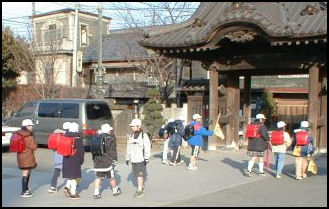
heading to school Japan only requires nine years of compulsory education. The Japanese education system consists of six years of elementary school, three years of middle school and three years of high school.Japanese elementary schools tend to be highly-organized but fun and emphasize community responsibility and group activities. More Japanese elementary school students say they enjoy school than their American counterparts. Education doesn't get to be oppressive until middle school and high school when students are required to memorize a lot of facts, and do a lot of math and science problems in preparation for major entrance exams.
According to the Education in Japan website: “Student life in public elementary schools in general is however acknowledged by most Japanese to be largely enjoyable, except for some students that can set in during the transition to junior high school. Rigorous swotting for entrance exams is said to characterise student life in Japanese schools beginning just before entry to middle schools. To secure entry to most high schools, universities, as well as a few private junior high schools and elementary schools, applicants are required to sit entrance exams and attend interviews. As a result, a high level of competitiveness (and stress) is often observed among students (and their mothers) during pre-high to high school years. In order to pass entrance exams to the best institutions, many students attend private afterschool study sessions (juku or gakken) that take place after regular classes in school, and/or special private preparation institutions for one to two years between high school and university (yobiko).[Source: Education in Japan website educationinjapan.wordpress.com ]
The great majority of those who complete the required education of nine years by age 12 go on to three-year senior high school, specifically 94.3 percent of the boys and 96.4 percent of the girls. Advancement to colleges and universities is 36.3 percent for men and 39.2 percent for women. This trend to high academic achievement orientation has created stress and mental pressure in the “entrance examination war” all Japanese youths experience. Because of overemphasis on the entrance examination, many recognize the necessity of Juku, extracurricular schools in the evenings and on holidays, tutors, and/or correspondence courses to prepare for the examinations. Such practices are common in Japan these days, perhaps more so than in other countries, suggesting the need to discuss the effects and consequences of the Juku for the social life of Japanese adolescents and young adults. [Source: Yoshiro Hatano, Ph.D. and Tsuguo Shimazaki Encyclopedia of Sexuality, 1997 hu-berlin.de/sexology ]
After the 1947 educational reform, the Japanese educational system was redesigned around a uniform 6-3-3-4 system (six years of elementary school, three years of middle school, three years of high school and four years of college). The academic year runs from April 1 to March 31. Beginning in April 2002, the school week is five days long and the academic year is 210 days long. [Source: Ishikida, Japanese Education in the 21st Century, usjp.org/jpeducation_en/jp ; iUniverse, June 2005 ~]
Primary and secondary schools follow a trimester system, with forty-day summer vacations and two-week winter and spring vacations. The Japanese Ministry of Education (MOE) has recommended that the boards of education should allow more flexible summer vacations. After deregulation permitted some schools to replace the trimester system with a semester system, they introduced an autumn recess between semesters. In the 2004-5 school year, 9 percent of public elementary schools, 10 percent of public middle schools and 26 percent of public high schools had the semester system (As of January 31, 2005). ~
Average years of school for people 25 years and older: 10.6 years for females; 10.8 years for males (Compared to 1.2 years for females and 3.5 years for males in India; and 12.4 years for females and 12.2 years for males in the United States.
In 1986, around 94 percent of all students entered high school (a similar ratio to the United States) and 35 percent of all secondary school graduates continued on to university. The drop out rate in Japan is 10 percent compared to 25 percent in the United States. About 87.6 percent of all students attend public schools. Some families spend half their income on private schools for their children. The number of students is declining. In 2003, 1.27 million students graduated from high school down from a peek of 1.8 million in 1992.
Good Websites and Sources: Good Photos at Japan-Photo Archive japan-photo.de ; Lives of Japanese Elemtary School Students tjf.or.jp/shogakusei ; Shinjuku Board of Education on School Life shinjuku.lg.jp/foreign ; A Day in the Life of a Japanese Kid cusd.chico.k12.ca.us ; Kids Web Japan web-japan.org/kidsweb/faq/life ; Kid’s Life on Japan library.thinkquest.org ; Daily Life in a Japanese High School ericdigests.org ; Wikipedia article on Secondary Education in Japan Wikipedia ; International Study on Working Conditions of School Personnel pdf file nfer.ac.uk/nfer/publications
Links in this Website: EDUCATION SYSTEM IN JAPAN Factsanddetails.com/Japan ; SCHOOLS IN JAPAN Factsanddetails.com/Japan ; TEACHERS IN JAPAN Factsanddetails.com/Japan ; SCHOOL LIFE IN JAPAN Factsanddetails.com/Japan ; BULLYING AND SCHOOL PROBLEMS IN JAPAN Factsanddetails.com/Japan ; UNIVERSITIES IN JAPAN Factsanddetails.com/Japan ; JAPANESE CHILDREN Factsanddetails.com/Japan ; JAPANESE TEENAGERS AND YOUNG ADULTS Factsanddetails.com/Japan
School Uniforms and Changing Clothes in Japan
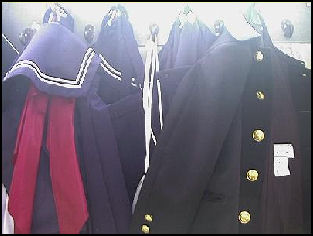
Small children wear colored-coded caps and have badges pinned to there shoulders that indicate their grade. In elementary school, students generally don't wear school uniforms but they do wear them in middle school and high school. The boy's uniform consists of a blue cotton Mao-style jacket with matching pants. The girl's uniform consists of a is solid-dark-colored or plaid knee-length skirt and a sailor-style or plain white blouse.
There are winter uniforms and summer uniforms and spot checks on the uniforms to make sure they are in order. As might be expected, students, especially girls, flaunt the rules by wearing their uniforms in ways they were not meant worn. Girls wear their short tails out, their collars turned up and pull their skirts way up so the become ultra short miniskirts. They often bring make-up and current fashion items in their school bags and change into them after school. See Loose Socks, Fads.
In some places, girls wear uniforms to school that don’t use uniforms and school uniform manufacturers have opened up boutiques to sell their clothes to the general public.
In elementary school, boys and girls change into sports clothes together in the same classroom in in first, second and third grade. Boys generally don’t give the girls a second glance. Girls usually wear skirts that day so they can slip on their sports pants without having to take anything off. From the forth grade on they change clothes in different rooms.
School Rules in Japan
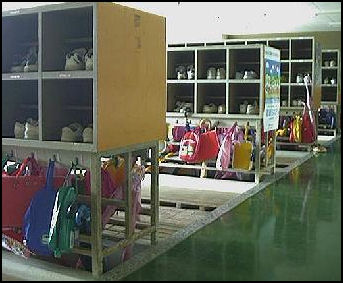 In the 1870s educator William Elliot Griffin wrote that Japanese students "delights his teacher's heart by his docility, his industry, his obedience, his reverence, his politeness." Many foreigners who have taught or spent time in Japanese school feel that Griffins observations still largely hold true today. Others have found that for polite kid there is a trouble maker.
In the 1870s educator William Elliot Griffin wrote that Japanese students "delights his teacher's heart by his docility, his industry, his obedience, his reverence, his politeness." Many foreigners who have taught or spent time in Japanese school feel that Griffins observations still largely hold true today. Others have found that for polite kid there is a trouble maker.
Students who have been caught cheating have had their heads shaved and have been expelled from school.
Children in Japan learn preparedness at an early age. In kindergarten they are taught to fold their jackets properly and always have tissue in one pocket and a handkerchief in the other. In grade school they learn to have three sharpened pencils in their desk — not four, not two — and always have glue, rulers and erasers close at hand in their pencil boxes. Elementary school students change into slippers when they arrive at school and put their shoes on special shelves. They all carry the same kind of correct backpack and are informed of the one correct way to adjust its straps.
Japanese schools have strict rules about fingernail length and hair styles. Cosmetics are banned and students with long or died hair sometimes have it shorn on the spot by a teacher or principal.As might be expected students, especially girls, flaunt the rules by wearing their uniforms in ways they were not meant worn. Girls wear their short tails out, their collars turned up and pull their skirts way up so the become ultra short miniskirts.
Standing out or displaying signs of individualism are often frowned upon at Japanese secondary schools. At a middle school in Kitakyushu filmed by “News Zero” a principal greeted students at the gate and directed those with tinted hair to a designated area where a teacher spray painted their hair black. Video showed students covering their face and eyes while they were being spray painted.
The sturdy backpacks favored by Japanese kids are made of thick, durable leather. They sell for between $200 and $500 and come in a variety of colors and models although but have the same basic design. Grandparents of often buy new students backpacks when they enter the first grade and the students are expected to keep the same pack throughout their elementary school career. It is possible to get negative ion school backpacks with “specially prepared natural minerals” and aromatherapy models.
School Class Size and Student Organization in Japan
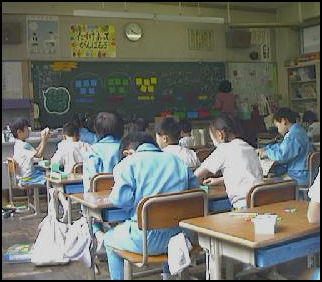
The number of students in each classroom is generally larger than in the United States. The teacher to student ratio is listed at 21 to 1 for Japan but a typical primary school class has around 31 to 35 students; a typical middle school class has 36 to 40 students; and a typical secondary school class has 45 students. When asked what they think is an ideal class size most teachers say between 21 and 25.
Teachers organize student into groups with student leaders and other members of the group using peer pressure to keep the group members in line. There is an emphasis on functioning harmoniously as a group. If one students acts up or doesn’t do chores, it is up to the other students to pressure him to act right,
The students in Japanese schools are generally better behaved and there are far fewer discipline problems than in the United States. Studies have also shown that Japanese students on average spend about one-third more time learning each class period than American students do.
Students identify very closely with the kids in their grade, arguably more so than in the United States. Teachers change classrooms rather than students, leaving students with the same group all day. Substitute teachers often are not necessary because the students can direct their own activities.
Japanese kids have a lot of summer homework. Traditionally it has been regarded as shameful for students to ask too many questions in the classroom. Senior (“sempai”)-junior (“kohai”) relations are important in defining how students behave with kids in their class and with older and younger kids, teachers and administrators. See Children.
To improve the quality of education some schools have started stressing “Finnish-style” classes on which small groups discuss of a variety of topics, such as competition and personal worries, the result is that students are more willing to express their opinions.
Education Technology in Japan
As of March 2010, about 56,000 public schools in Japan were using electronic blackboards, three times the number a year before. A number of schools got them as part of an economic stimulus package. One survey found that between 30 percent and 50 percent of the teachers in schools that had the device didn’t know how to use them.
In Japan can you find classes of forth graders where every student has a laptop or a tablet computer. One of the biggest obstacles to overcome in these classes is the fact that some students are far more familiar and adept with computers than others. The Japanese government is considering providing every student with a tablet-style computer by 2020.
Primary school science, teachers say, is declining due to a lack of funds and teachers with adequate skills. Some teachers use their days off and their own money to do things like building insect cages for their classrooms.
Swimming Lessons in Japan
Nearly every elementary school in Japan has an outdoor swimming pool. In elementary school swimming lessons are part of the school year curriculum and are offered free during the summer. The goals is teach swimming to kids so they can enjoy the sport and feel safe around water.
In June when the swimming lesson start parents are given detailed handouts of what is expected of them and their children. Students must wear regulations swim suits and caps with their name, grade and class written on them. Parents are supposed to check their child's temperature every day and mark it on a card that says their child is healthy enough to swim that day. Parents put their hanko (chop) on the card. If a child does not have the card he or she can not swim that day.
Students change into their swim suits at school, with girls in one classroom and boys in another. They carefully stretch and shower, and sometimes walk through a hip-deep pool of disinfectant and finally enter the pool about 60 at a time. The kids regular classroom teacher dons a bathing suit and teaches the classes. The students are taught different skills and proceed up a ladder of 15 ranks.
Students in many places are required to swim a certain distance such as 100 meters, 200 meters or 400 meters. If they can’t they have to attend a special summer training program.
Parents and Schools in Japan
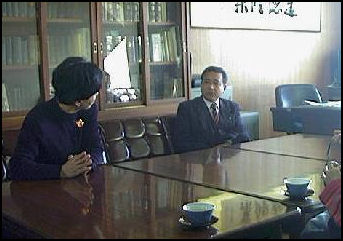
In a survey in 2005, 80 percent of the Japanese parents said they were worried about their children’s studies.
Japan has PTAs which usually operate under the school’s supervision rather than the other way around. Parents are often very involved in PTAs. Sometimes organization of a PTA is a little inefficient, with more people putting in more time than is really necessary but the work load is shared fairly equally by all parents of children in the school.
Japanese PTAs are different than American PTAs in that they demand parents pay about $50 up front and generally do not have to engage in fund-raising or sponsor bake sales. Japanese PTAs generally do not buy things for the school. Instead of money parents are expected to give their time in terms of participating in school festivals and serving as a class manager, and sponsoring welcoming parties for new students and new parents.
See Monster Parents Below
Education Crazy Mothers in Japan
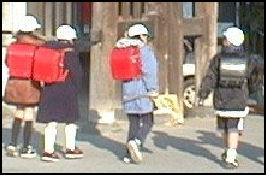
heavy backpacks The Japanese family is the cornerstone of the Japanese school program, and because the father is rarely home, the mother bears most of the responsibility for making sure her children do well in school. She drills her children, reads to them and works hard to supplement what they are taught in school, and sometimes even attends their classes when they are sick, sitting in special large desks designed for the mothers, so their children don't fall behind. Mothers, not her children, are the ones who are blamed if a child gets low marks in school. [Update: the bit about the mothers attending classes for their sick children is from a Smithsonian magazine article from the early 1990s. It is not done much today. Many Japanese laugh and roll their eyes when I mentions it. It is also worth mentioning there are a lot of Japanese mothers out who are not so engaged in their child's education]
According to a U.S. Department of Education report: "Much of a mother's sense of personal accomplishment is tied to the educational achievements of her children, and she expends great effort helping them. In addition there is considerable peer pressure on the mother. The community's perception of a woman's success as a mother depends in large part on how well her children do in school."
Mothers in Japan are obsessed with their children's education are called Education Crazy Mothers. Describing one, Carol Simons wrote in Smithsonian magazine, "she studies, she packs lunch, she waits in lines to register her child for exams and waits again in the hallways for hours while he takes them. She denies herself TV so her child can study in quiet and she stirs noddles at 11:00pm for the scholars snack...She knows all the teachers, has researched their backgrounds and how successful their previous students have been in passing exams. She carefully chooses her children's schools and juku and has spent hours accompanying them to classes."
Mothers of elementary-school-age children also attend gymnastic, violin and sumo wrestling classes with their children so they can help their kids practice at home. Extreme "education crazy mothers" accompany their sons to their first day of classes at university and even their first day of work after graduation.
Mothers are often judged by how well they prepare their child's “o'bento”, an "honorable lunchbox" which usually contains fresh peas, boiled eggs, lotus roots, mint leaves, tomatoes, carrots, fruit salad, minced chicken, seaweed is cut into teddy bear shapes and fluffy white rice with a plumb in the middle (symbolizing the rising sun on the Japanese flag).
A sloppy lunch box is regarded as a sign of an uncaring mother. Making bentos has been described as means for mothers “to demonstrate their devotion to motherhood, dedication to heir children’s nutrition and creative skills. One mother told AP, “This is about my pride.”
Little Free Time for Children in Japan

Elementary school students have plenty of time to play around with their friends after school if they are not too busy with after-school activities. A typical middle school or high school students, however, arrives home from school at around 4:00pm, has a quick snack and attends cram school classes, often three times a week from 5:00pm to 10:00pm. Sometimes students have cram school classes Saturday and all day Sunday too.
Elementary school kids are usually very busy with activities two or three days a week after school Girl usually take ballet, dance or piano. Boys play baseball or do karate. Both boys and girls take English, calligraphy, arithmetic or swimming lessons.
One of the biggest tragedies of the Japanese education system is the fact that children and teenagers study all the time and they have little time left over for fun. Students at one Japanese high school were beside themselves with envy when a visiting American high school student talked about how he spent his after school hours driving a car to the mall, dating, making money with a part-time job and talking on the phone for hours in the evening.
A typical Japanese student takes a break after school and then runs off to juku classes. Later he or she often does homework. One Japanese student told U.S. News and World report, "I can play an hour with my friends before cram school."
Secondary School Life
Japanese secondary students have a shorter summer vacation but a longer winter one than their American counterparts. On an average day, Japanese high school students attend school from 8:30am to 4:00pm and have 2 to 6 hours of homework a night, depending on the school, individual and how immersed in exam hell they are. Many attend cram school in the afternoon and on weekends and are heavily involved in sports or club activities.
High schools are ranked and students who attended them are identifiable by their school uniforms. Those that attend low-ranked schools stand out. Once a students has been condemned to low school it is hard for them to make advancements in life. Describing the students in an a vocational high school, Karl Taro Greenfield wrote, "The kids were friendly, jovial and not at all interested in learning English. Most of them slept during class, others kept up a steady stream of jabber, and when I tried to quiet them, they simply walked out...The girls dyed their hair reddish brown. Tattoos abound. Take, a guitar player....asked about drug prices in Los Angeles."
Surveys indicated to show that secondary students are goofing off more. One poll that half of final year high school students do less than two hours of studying a day outside of school and one in five did hardly any studying at home.
A government survey found that a third of middle and high school students slept during the day.
In a piece on a high school in Kitakyushu by the Japanese television station “News Zero” first year students came across as being eager and hopeful; third years students seemed burnt out from preparing for university exams; and second year students appeared aggressive and rebellious, anxious to take out their frustration in first year students for not showing proper respect.
Japanese Children, Teenagers and Cell Phones
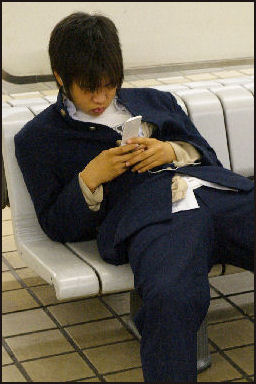
According to 2008 government statistics 31 percent of primary school students carry cell phones. DoCoMo Mo offers a line of cell phones for small children, with software ranging from picture books to school scheduling pads aimed t helping them to learn . In 2001, only 10 percent of Japanese elementary-school and middle-school-age kids had their own cell phones.
As of early 2008, 60 percent of middle school students had cell phones, and nearly half of them used them to send 20 or more e-males a day but rarely used them to talk, and 96 percent of high school students used them, with high school boys using their phones an average of 92 minutes a day and high school girls using theirs 124 minutes.
A survey in he Osaka area in 2008 found that 18.2 percent of middle school students and 29.5 percent of high school students use their cell phones mor than three hours a day and found that eight percent of first year female high school students send 100 or more e-mails a day.
Cell Phones in Schools in Japan
Students routinely check and send e-mails under their desks and even take pictures during class. Even in schools where cell phones are banned it is not uncommon to have lessons interrupted by ringing or vibrating phones. In a 2004 survey, 70 percent of students said they had talked or sent a text message on the cell phone while in class. One high school teacher told the Yomiuri Daily, “Even if I warned a student, the student will send a reply within five minutes. There are students who, despite repeated warnings, continue to send e-mail.”
In January 2009, the Ministry of Education issued a notice calling on primary and middle schools to prohibit students from bringing cell phones to school. By that time more than 90 percent of primary and middle schools already has such bans in place. Objections to the ban has come from parents who like their children to carry cell phones for security reasons. According to the ministry guidelines parents that insist their kids have cell phones for emergencies would have to submit a formal request.
Wakayama Prefecture was one of the first to ban students from bringing cell phones to schools. It did it in 2002. But even today about one of third of Wakayama students bring their phones to school.
In December 2008, the Osaka prefectural government introduced a new regulations aimed at preventing students from using cell phones in public primary, middle and high schools in the Osaka area. The ban doesn’t prevent students from having their cell phones on them, only using them. Many thought the plan was unworkable.
A study in March, 2004 found that 70 percent of high schools allow students to bring cell phones to school. Of these about 90 percent required that the phones be turned off while the students are in school.
Stressed Students in Japan
A 1996 survey of Osaka high school students found that 80 percent felt stressed, 86 percent weren't getting enough sleep and 40 percent were getting less than six hours of sleep a night.
See Exam Hell Above.
A 12-year-old who spent New Year's day (Japan's biggest holiday) studying at a boarding cram school for his middle-school entrance exam said, "Studying this hard make me feel miserable sometimes. These are times when I encourage myself by thinking: wait and see — my great New Year's and years of fun will follow these exams.”
Students with special needs and learning disabilities such as attention deficient hyperactive disorder (ADHD) and even mental retardation attend normal classes with other students but also take special classes that address their particular needs. There also classes for absentee students to help them develop social skills.
Smart Japanese Kids
In 1995, Sho Yano, a 9-year-old third generation Japanese-American won admission to Loyala University after scoring 1,500 on his SATs. A year later he graduated from university at the age of 10, a record.
At eight months Yano could read the television lists. At one he could order food from a menu at a restaurant. His mother told him not to speak in public because she was tired of people staring. Some referred to him as "natto brain" because of his habit of eating natto at an early age. At the age 4 he was told he had photographic memory and an IQ of 200. He was raised in a Chicago suburb. He likes mathematics and music.
Toshiki Kataoka, a 12-year-old six th grader from Matsuzaka in Mie Prefecture, made the shortlist to represent Japan in a prestigious international math competition. While in elementary school he studied middle school and high school math with his father, a doctor.
Sho Yano entered the University o Chicago when he was nine. He graduated with top honors at 12 and entered the University of Chicago’s School of Medicine, becoming the youngest person to obtain a PhD from the university which he achieved in 2009. He said he plans to stay in the university and get a degrees in medicine.
According to the Guinness Book of Records, Hioryuki Goto of Tokyo recited pi to 42,195 places in Tokyo in February 1995.
Image Sources: 1) 2) 7) 11) 13) June of Goods from Japan 3) 5), 6) 8), 9) 10) 12) Guven Peter Witteveen 4)exorsyst blog 14) Andrew Gray Photosensibility, 15) Ray Kinnane
Text Sources: Source: Miki Y. Ishikida, Japanese Education in the 21st Century, usjp.org/jpeducation_en/jp ; iUniverse, June 2005 ~; Education in Japan website educationinjapan.wordpress.com ; Web-Japan, Ministry of Foreign Affairs, Japan; New York Times, Washington Post, Los Angeles Times, Times of London, The Guardian, National Geographic, The New Yorker, Time, Newsweek, Reuters, AP, AFP, Wall Street Journal, The Atlantic Monthly, The Economist, Global Viewpoint (Christian Science Monitor), Foreign Policy, Wikipedia, BBC, CNN, NBC News, Fox News and various books and other publications.
Last updated Japan 2014
